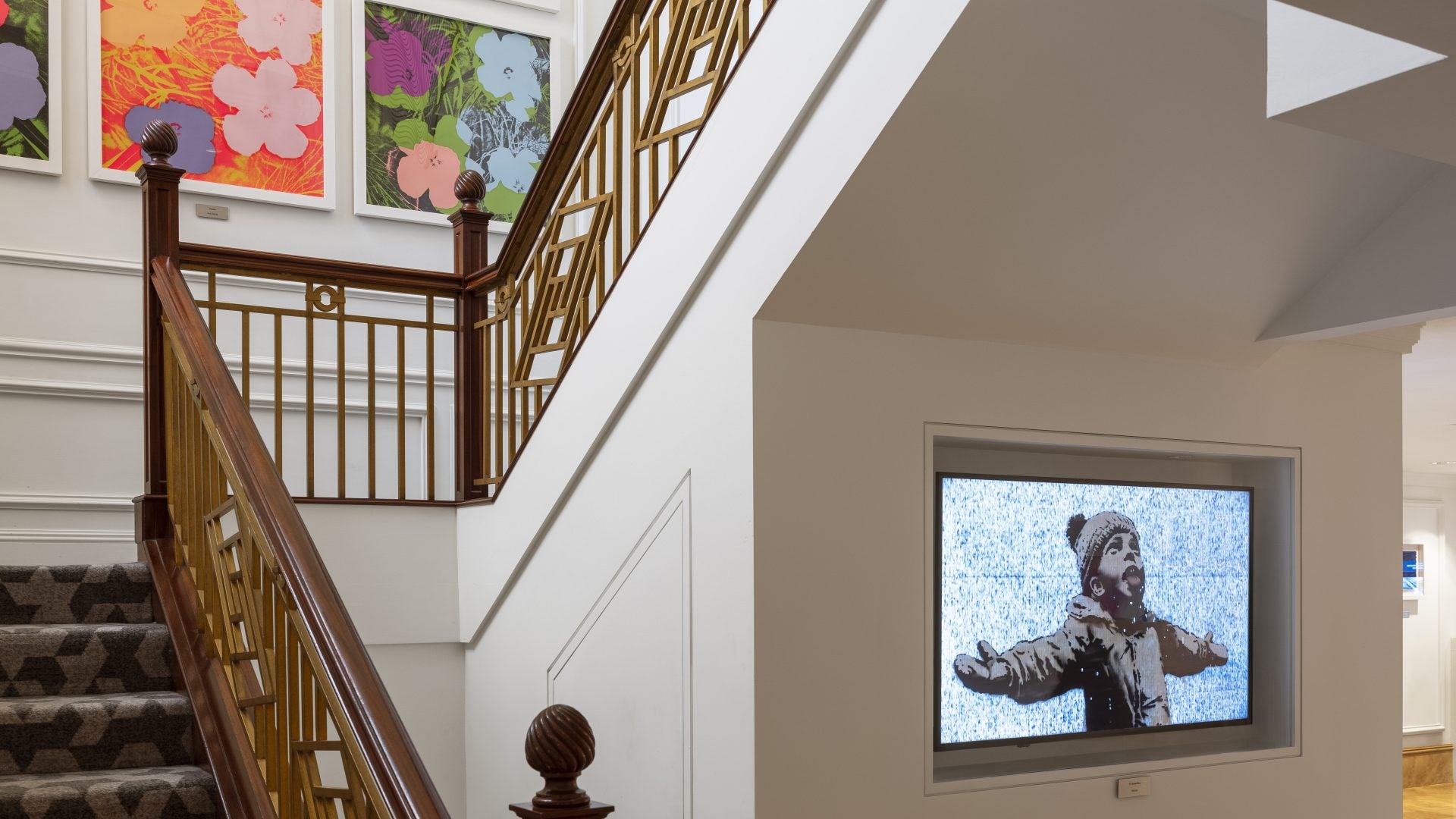
The impact of the Transatlantic Slave Trade is still being felt across the world today, and it’s important to not look at the enslavement of Black people in a linear, monolithic way, but from a global context. According to Bayyinah S. Jefffries, the author of Race and Racism in Bermuda, the country of Bermuda was not only the first permanent English settlement in the Americas, prior to Virginia, but also the earliest colony to engage in importing enslaved Africans. The first Africans arrived in Bermuda in 1612, and the first recorded Africans arrived in English North America in 1619. So, there’s a rich, yet little known history of Black Bermudians. That history is shared through mixed media across Bermuda, a nation spanning just 1.75 miles in width.
Contrary to popular belief, the enclave isn’t a part of the Caribbean Islands, but rests hundreds of miles north of the Bahamas, and 650 miles east of North Carolina. Yet, the English Colony has a mix of cultural influences from British to Afro-Caribbean. The country’s melting pot of cultures tells a myriad of stories—shipwrecks, enslavement, colonization, and displacement—all of which have shaped its complex history.
The month of October marks the country’s second annual Art Month, which highlights the democracy’s beauty, soul, and history. The creative celebration that lasts the entire month sheds light on Bermuda’s art community, that is using different mediums to reimagine the stories of the country’s past, present, and future, present, and future. In fact, the isolated islands of Bermuda, which have a reputation for having an “endless spring,” became inspirational getaways for poets such as Mark Twain, as well as artists like Georgia O’Keefe and Winslow Homer.
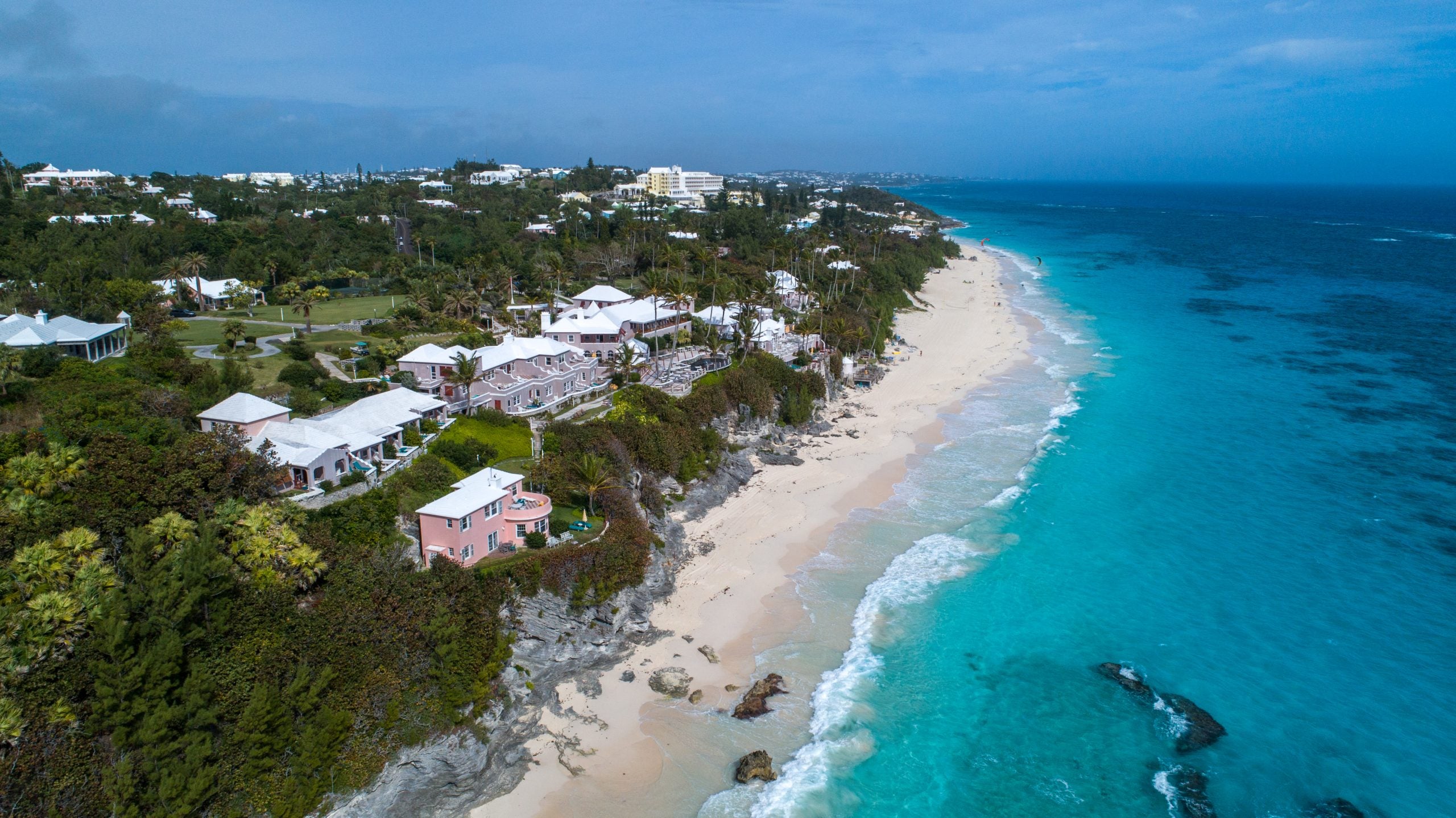
The island itself is a work of art. Upon arriving in Bermuda, the beauty of its picturesque beaches immediately captivates you. Yet, one of Bermuda’s most distinctive features is the white limestone roofs that crown every home, business, and school. These roofs are not just aesthetic; they serve a vital purpose by collecting rainwater to support the island’s water supply, as Bermuda lacks a state-of-the-art filtration system. Despite the absence of modern technology, this ingenious system contributes to the island’s stunning skyline.
The Food
It’s also no coincidence that art month happened to fall during the island’s Taste Of Bermuda celebration, where locals and tourists alike could get a taste of authentic Bermudian cuisine. A country that sits so close to the Atlantic Ocean has to be known for their seafood dishes, and across the island, everything tastes good—from the fried fish sandwiches to the ceviche. Bermuda is also home to Bacardi’s headquarters, where restaurants from all over the island came to battle it out in “The Art Of The Pour” crafting cocktails with their own twist.
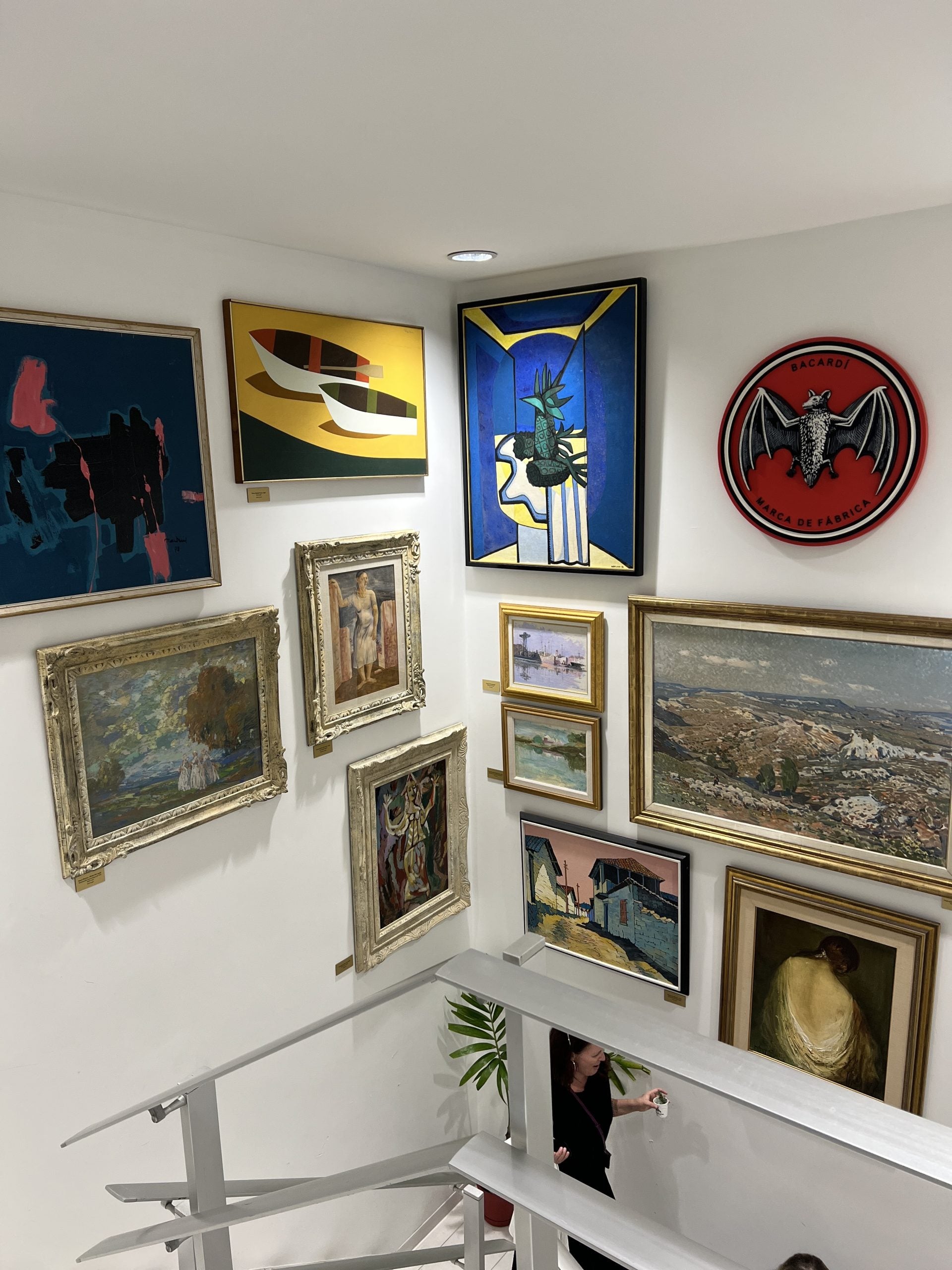
If you’re looking for dinner by the beach, where you can literally hear the waves crashing, The Loren at Pink Beach is the place to go. Looking for light bites and a co-working space vibe? The Botanist Cafe at Masterworks. Pizza made with vegan ingredients? Clarabell. A spot where poetics meet culinary? Huckleberry (named after Twain’s famous book, Huckleberry Finn). An authentic Bermuda fish sandwich? Mama Angies, where you order it the original way, with raisin bread and coleslaw. An island known for its fish, would also specialize in sushi, and at The Harbourfront, you’ll enjoy everything from tuna tartare to crab rolls to fried jumbo shrimp.
Foraging Tour
Bermuda’s uniqueness extends to its native flora and fauna, with a diet that leans heavily on fish and the greens grown on its fertile land. A must-do on any trip to the island is a foraging tour with Ms. Doreen, a local guide who introduces visitors to the bounty of Bermuda’s natural offerings. Her tours take you through fields and forests where you’ll discover wild fennel, plums, pimento, mustard greens, and more—ingredients that have sustained Bermudians for generations. Many of the island’s earliest settlers thrived by living off the land, even in times of famine, and Ms. Doreen’s tour provides a glimpse into that resilient tradition.
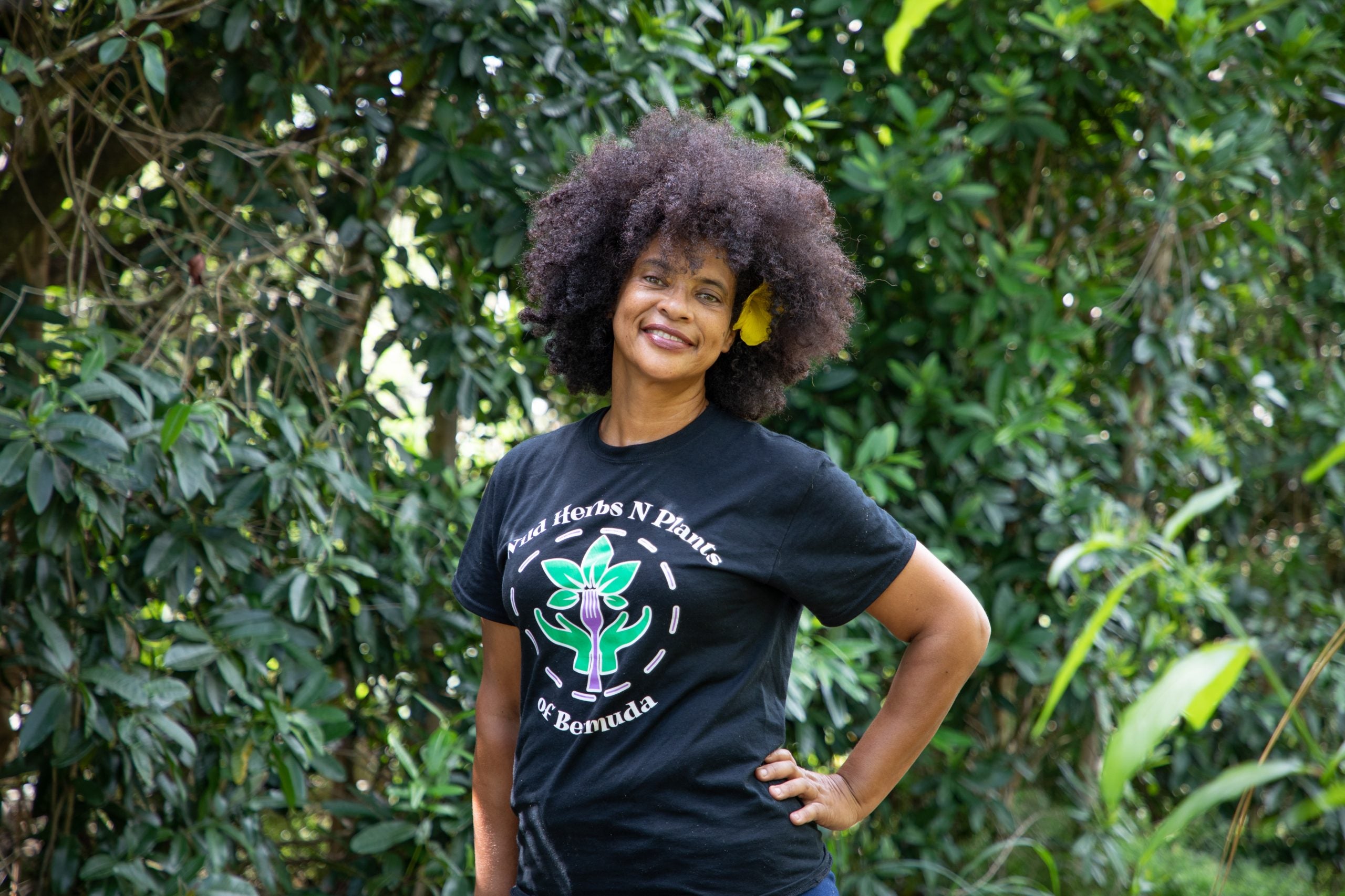
The experience culminates in a vegan-leaning meal prepared by Ms. Doreen herself, using the fresh ingredients harvested from the tour. Though the menu might be unfamiliar to visitors accustomed to meat-centric dishes, the flavors are so rich and satisfying that even the heartiest of appetites will leave feeling full. This culinary journey offers not just a taste of Bermuda’s natural resources but also a deep connection to the island’s history and self-sustaining practices, and the beauty of living in harmony with the land.
The Hamilton Princess
As you can see, art on the island isn’t just confined to galleries and museums, but extends even to its resorts and beach clubs. The Hamilton Princess in Bermuda lends itself well to the country’s art scene, home to a handful of works from the likes of Andy Warhol, David Hockey, and more world renowned artists. The hotel includes contemporary works, such as an 18-foot tall KAWS statue outside near the marina, and a LEGO scale model of the entire hotel property.
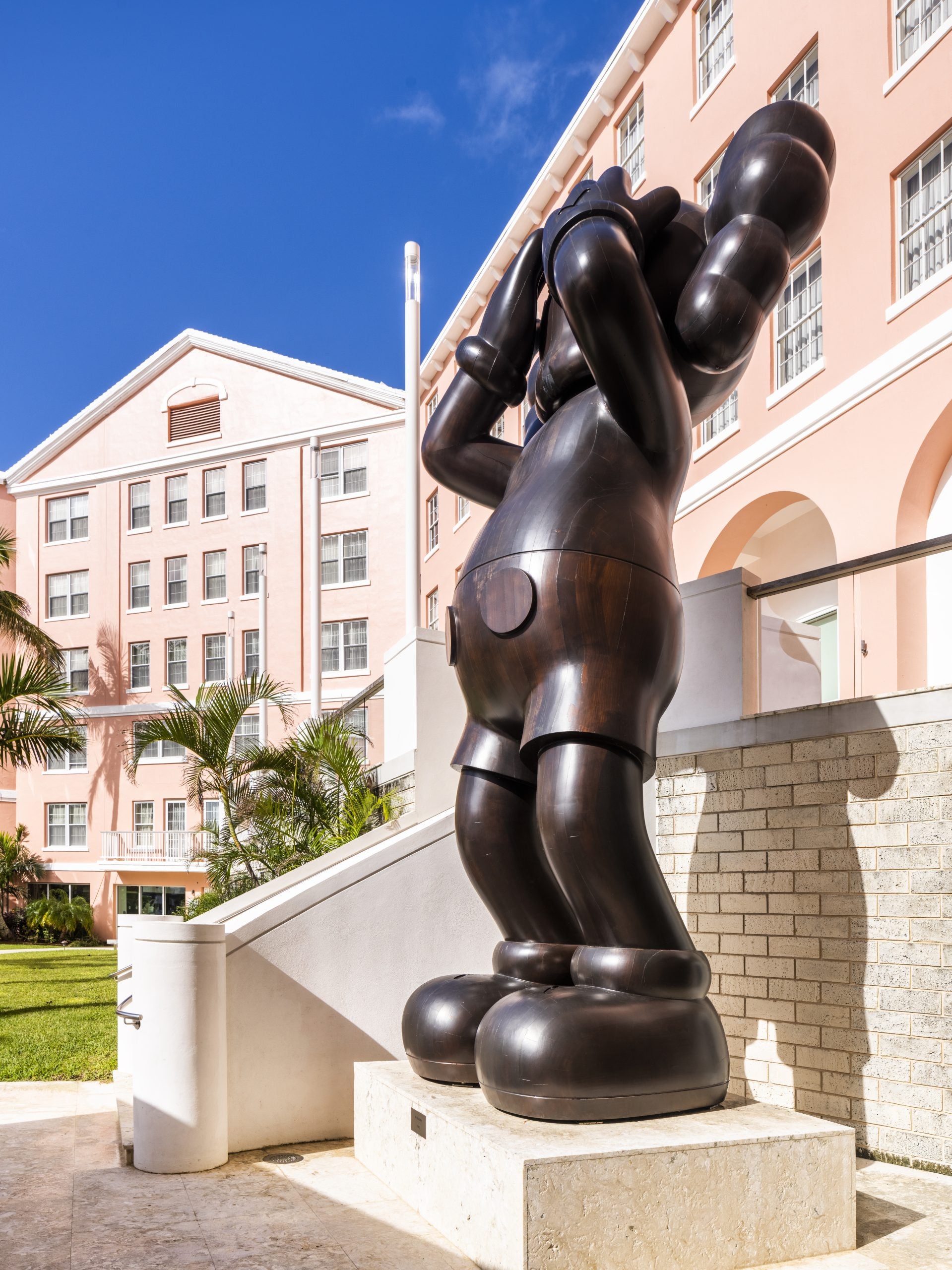
You don’t begin taking in the beauty of the palatial property once inside—as you’re driving towards the the Hamiltion Princess, you’ll notice that the entire property is a bright pink color, which is in part due to Princess Louise, the fourth daughter of Queen Victoria who visited the hotel in the 1800s and her favorite color was pink. Today, the property is owned by The Bermudian Green family, and the hotel, which doubles as an art museum, serves as an extension of their personal, one-of-a-kind art collection. Inside, there are works from Warhol, Pablo Picasso, and Banksy.
Masterworks
While the hotel is a vibrant destination for art enthusiasts, the true centerpiece of the island’s art scene is Masterworks, Bermuda’s premier museum that tells unique stories of Bermudian culture year round. The collection features internationally renowned artists, including O’Keeffe, who spent a year living in Bermuda during the 1930s.
Descendants Of Summer
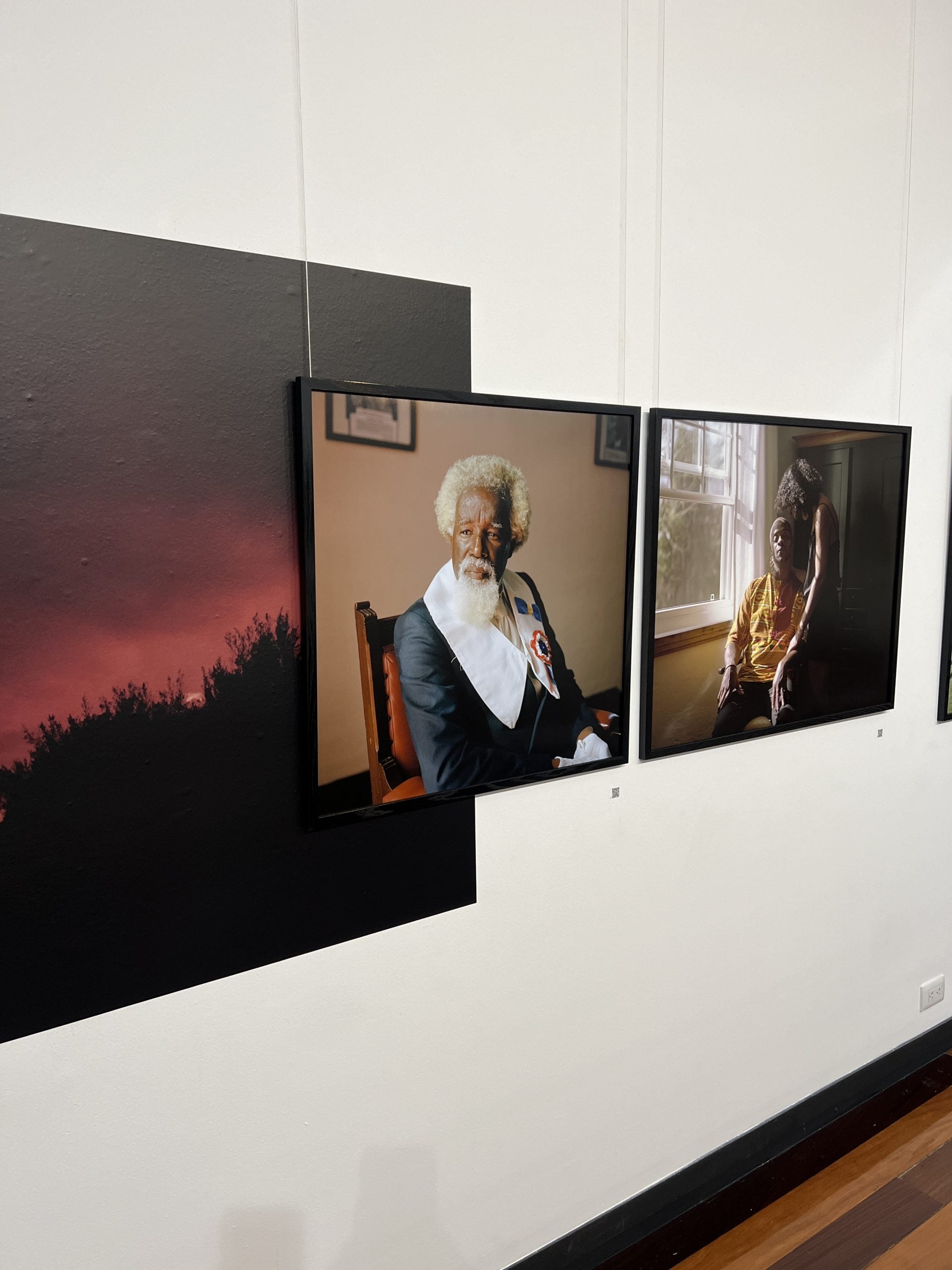
Currently on view at Masterworks is a preview of Descendants Of Summer, by documentary photographer Nicola Muirhead. This exhibit forms part of her larger, eight-year project exploring Bermuda’s rich heritage and cultural identity. Through her lens, Muirhead delves into the island’s history, capturing intimate stories of its “heroes and heroines, our ghosts and demons, and ultimately the tales that bind us,” according to her artist’s statement. Her work reflects the complex layers of Bermuda’s past, utilizing collective memory from activists, historians, political figures and other local artists to offer a profound reflection on the forces that have shaped the island’s spirit and resilience.
Not All Has To Be As It Was
Also taking space at Masterworks is multidisciplinary and contemporary artist’s Gherdai Hassell exhibition, Not All Has To Be As It Was. The collection portrays Black women as regal, majestic figures diving into the deep relationship between women and the land. Drawing from Black women she refers to as ‘Alibii,’ Hassell captures these figures adorned in their Sunday best, embodying a sense of pride and grace. The ‘Alibii’ women are inspired by characters in Nellie Musson’s Mind the Onion Seed, where they serve as the keepers of the onion seed—a metaphor for stewardship. In this context, they are envisioned as ‘landlords,’ caretakers, and matriarchal figures who hold dominion over the land. Through this symbolism, Hassell explores themes of heritage, identity, and the power of Black women as custodians of culture and history.
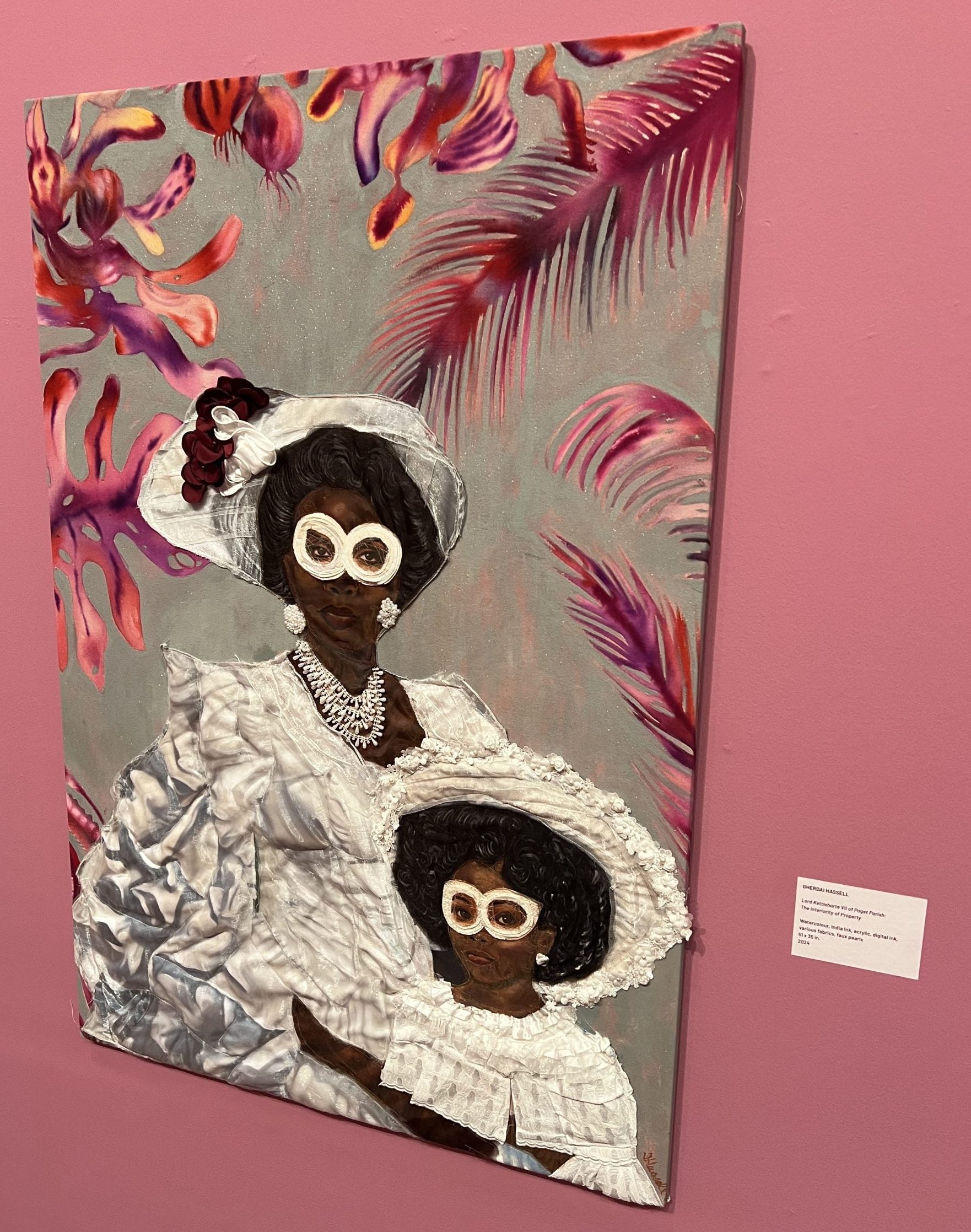
Hassell’s work leaps off the canvas, brought to life not only by paint but by the intricate layers of texture, mirroring the peeling back of an onion’s layers to reveal deeper meaning. In this exhibition, fashion becomes a tool for both empowerment and self-expression. Hassell uses a white dress and cape to narrate a story of reclamation, where clothing serves as a symbol of identity and transformation. Her artistic expression extends beyond traditional mediums; she incorporates textiles, soft sculptures, costumes, fabric-ink paintings, and collage to create a multidimensional experience. Historical elements such as old maps, archival images, housing plans, and biographies are interwoven with contemporary visions, allowing her to reimagine Bermuda’s landscape. By layering these documents with modern interpretations, Hassell challenges the past and presents an alternative vision of what the ‘Lords’ land might have been, creating a sense of renewed possibilities.
Bermuda National Gallery
Art informs and permeates so much of the country’s culture, that you’ll find it on every corner of the island. At the Bermuda National Gallery, this year’s theme is Places, Presence & Poetics: An Unpacking, offers a vibrant showcase of works from 25 diverse artists. The exhibition highlights the island’s deep connection to art through a wide array of mediums, including quilting, textile installations, polaroids, jewelry, foliage and more. Each piece reflects a unique story, engaging with the island’s history, environment, and cultural identity. The collection explores the idea of place—how geography, memory, and presence shape artistic expression—and emphasizes the poetic relationship between the land and its people. With art forms as varied as the island’s landscape, the exhibition serves as both a reflection of Bermuda’s past and a window into its future, where creativity continues to thrive as a cornerstone of its identity.
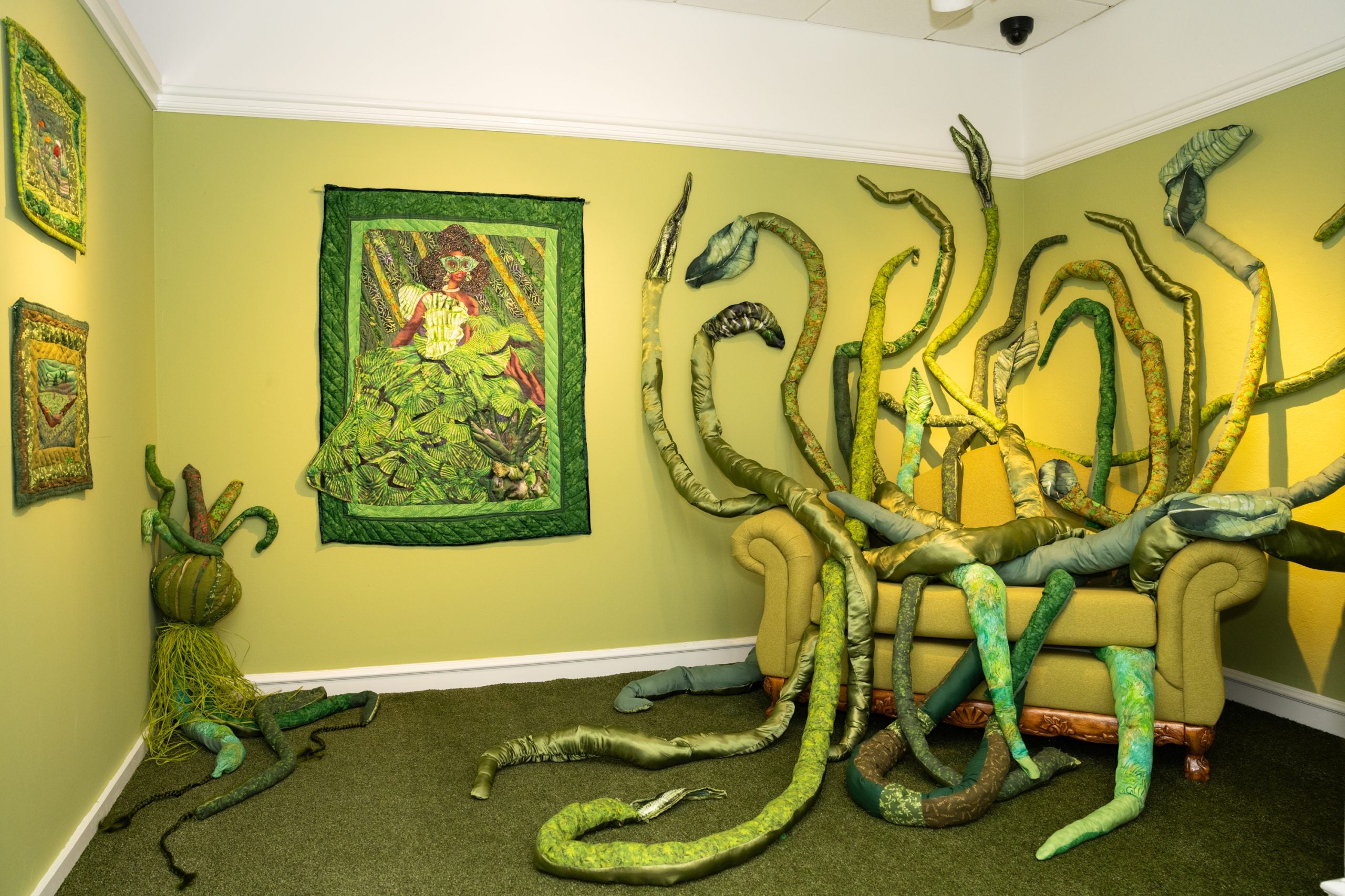
Meditations On Form
The Bermuda National Gallery proudly showcases a stunning jewelry collection by Bermudian native and renowned jeweler Melanie Eddy. Eddy is celebrated for her abstract geometric designs, which push the boundaries of traditional jewelry-making by blending contemporary form with deep personal meaning. Her work has garnered international acclaim, with pieces exhibited at prestigious venues like Sotheby’s in both New York and London, as well as the Victoria and Albert Museum in London.
For Eddy, jewelry is more than ornamentation—it’s an intimate exploration of identity and place. “Often I think my pieces are meditations on memories of Bermuda,” she reflects. Her creations evoke the island’s natural beauty and cultural landscape, with the angular, architectural shapes symbolizing the way her memories of Bermuda intertwine with the present. Through her jewelry, Eddy captures the essence of her homeland, offering wearable art that reflects the intersection of heritage, geography, and personal history.
Her work is deeply inspired by triangles—a shape that not only nods to Bermuda’s mysterious connection to the infamous Bermuda Triangle but also reflects her personal heritage. Coming from a family of stone masons, Eddy draws upon this legacy in her geometric designs, incorporating the precision and strength associated with masonry into her jewelry. The triangular forms in her pieces symbolize both the island’s enigmatic history and the craftsmanship passed down through generations of her family.
Forgotten Histories
In only its second-ever Art Month, Bermuda is making great strides in acknowledging a path forward creatively. As the old adage goes, ‘You don’t know where you’re going if you don’t know where you’ve been.’ Much of the island’s creativity is deeply rooted in its culture and history. However, not all art evokes the same response from Bermudians. Certain aspects of the island’s past remain controversial, with some historical narratives being frowned upon or left largely unacknowledged. This tension between celebrated heritage and difficult history reflects the complexity of Bermuda’s artistic identity, as the island grapples with how to honor its past while envisioning its future.
Consider the life of Mary Prince, a remarkable Black Bermudian woman who endured the harrowing experience of enslavement and became the first to publish an autobiography detailing her journey as a slave. Her groundbreaking work, The History of Mary Prince, not only provided a poignant firsthand account of the brutal realities of slavery but also played a crucial role in the abolitionist movement.
In recognition of her significant contributions, Bermuda is unique in the world for honoring a Black woman with a dedicated holiday, celebrated annually at the beginning of August. This holiday not only commemorates Prince’s legacy but also serves as a powerful reminder of the ongoing struggle for justice and equality, inviting the community to reflect on the complexities of their history and the resilience of those who fought for freedom.
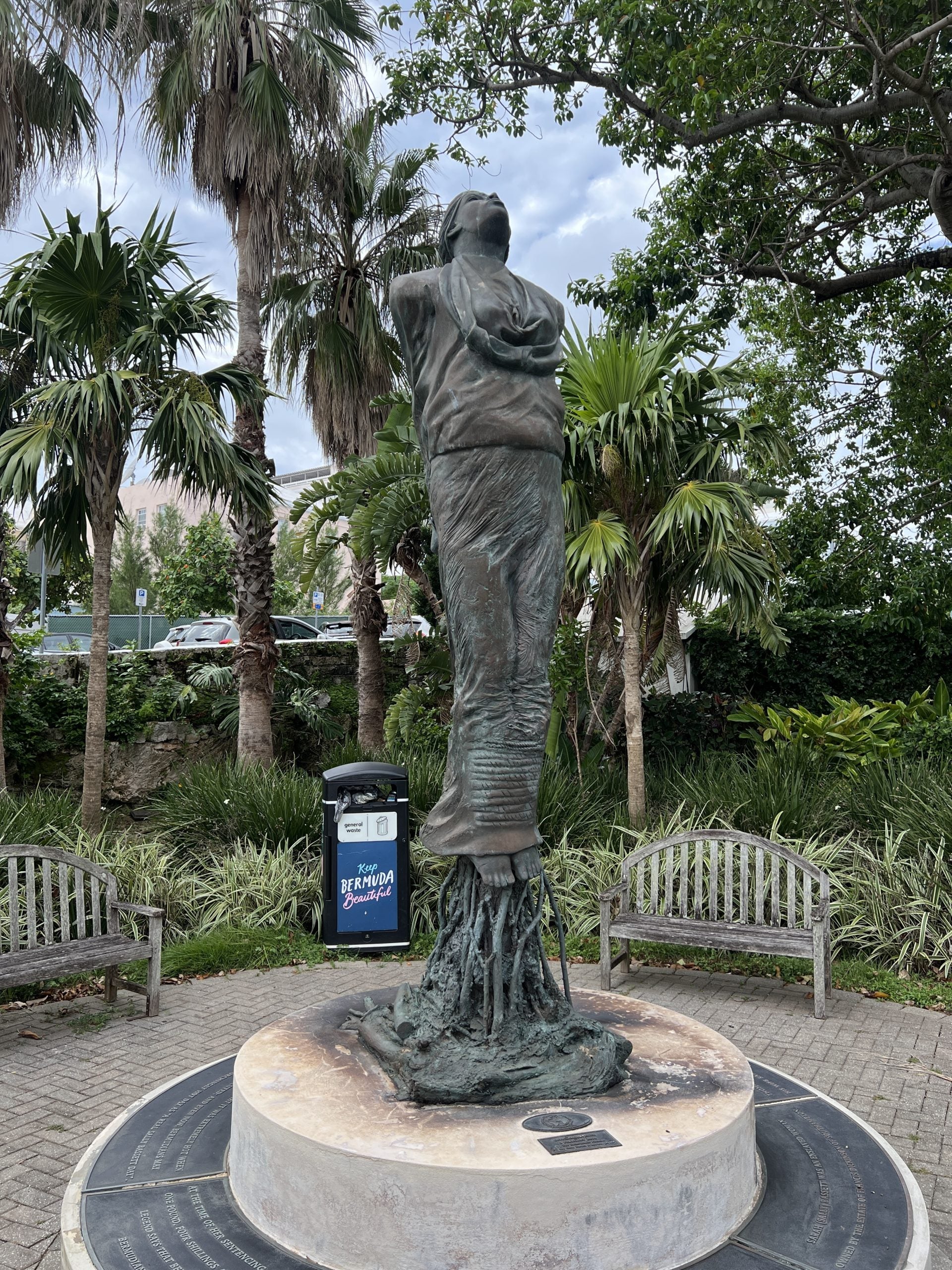
Similarly, Sarah ‘Sally’ Bassett stands as a poignant symbol of resistance in Bermuda’s history. A Black Bermudian woman, Bassett was tragically executed by being burned at the stake in 1730 after being found guilty of poisoning the slave owners of her granddaughter. Today, she is memorialized by a statue, although its placement in an obscure location—hidden behind the gates of Bermuda’s Cabinet Building—reflects the complex and often uncomfortable relationship the island has with its past. The decision to position the statue there is believed to stem from the controversial nature of Bassett’s story, as many Bermudians are reluctant to confront the violent aspects of their history. Yet, it is the artists within the Bermudian community who are courageously working to bring these critical narratives back to light. Kristin White, a native Bermudian and historian, emphasizes that the essence of Bermuda’s story is one of resistance. She asserts, “Telling a story artistically can be controversial; however, not telling the story is what causes the erasure of Bermudian history.” Through their art, these creators challenge the prevailing narratives and encourage a more honest dialogue about the past, and the voices that have shaped it.
DavidRose Studio
Davidrose Jewelry is a unique collaboration between husband and wife duo, David and Rose, who first crossed paths over a decade ago as students. As their relationship flourished, so did their dreams of creating stunning collections that reflect the beauty and essence of Bermuda—its azure seas, expansive skies, and rich stories. Each piece of jewelry crafted by Davidrose is infused with the couple’s love for the island, translating its vibrant culture and natural landscapes into exquisite wearable art.
In fact, the DavidRose Studio in Hamilton has crafted notable pieces that celebrate Bermuda’s rich heritage while directly honoring the legacy of Mary Prince. Among these creations are the Mary Prince Dollar Coin, which commemorates her invaluable contributions to the abolitionist movement and serves as a symbol of resilience and empowerment, and the Frangipani, a piece inspired by the beauty of the island’s flora and the strength of its history. These works not only pay homage to Prince’s remarkable life but also reflect a broader commitment to recognizing and preserving Bermuda’s cultural identity.
Public Murals
UnSettled Freedom
Artists from Bermuda were commissioned to paint murals all over the island to depict Bermudian life and heritage, and you can take in their beauty and get a history lesson, with the help from people like White, who are helping to keep the history of Bermuda alive. Artist Shanna Hollis’ murals are spread across Bermuda, each one capturing a unique story that reflects the island’s diverse history and culture. One of her most significant projects, UnSettled Freedom (2024), located in St. George’s King’s Square near the historic Ducking Stool, is a reflection on Bermuda’s complex history and the many stories that define its heritage. Curated in collaboration with cultural heritage partners such as the Bermuda National Trust and Long Story Short, the mural represents Bermuda’s World Heritage status.
Divided into three panels, UnSettled Freedom explores themes of freedom, identity, and transformation, offering a powerful commentary on Bermuda’s journey through time. Hollis uses bold, expressive imagery to not only reflect on the island’s history but also to celebrate its present and imagine its future. Each stroke of her brush tells a story, drawing attention to the nuances of Bermuda’s past—from colonization and enslavement to independence and cultural pride. Through this piece, she invites viewers to engage with difficult truths while also honoring the resilience and creativity that continue to shape the island. Hollis’ work, especially in this mural, exemplifies her gift for merging artistic expression with cultural storytelling, creating spaces for reflection, conversation, and an appreciation of Bermuda’s unique heritage.
The Peaceful Protest Project
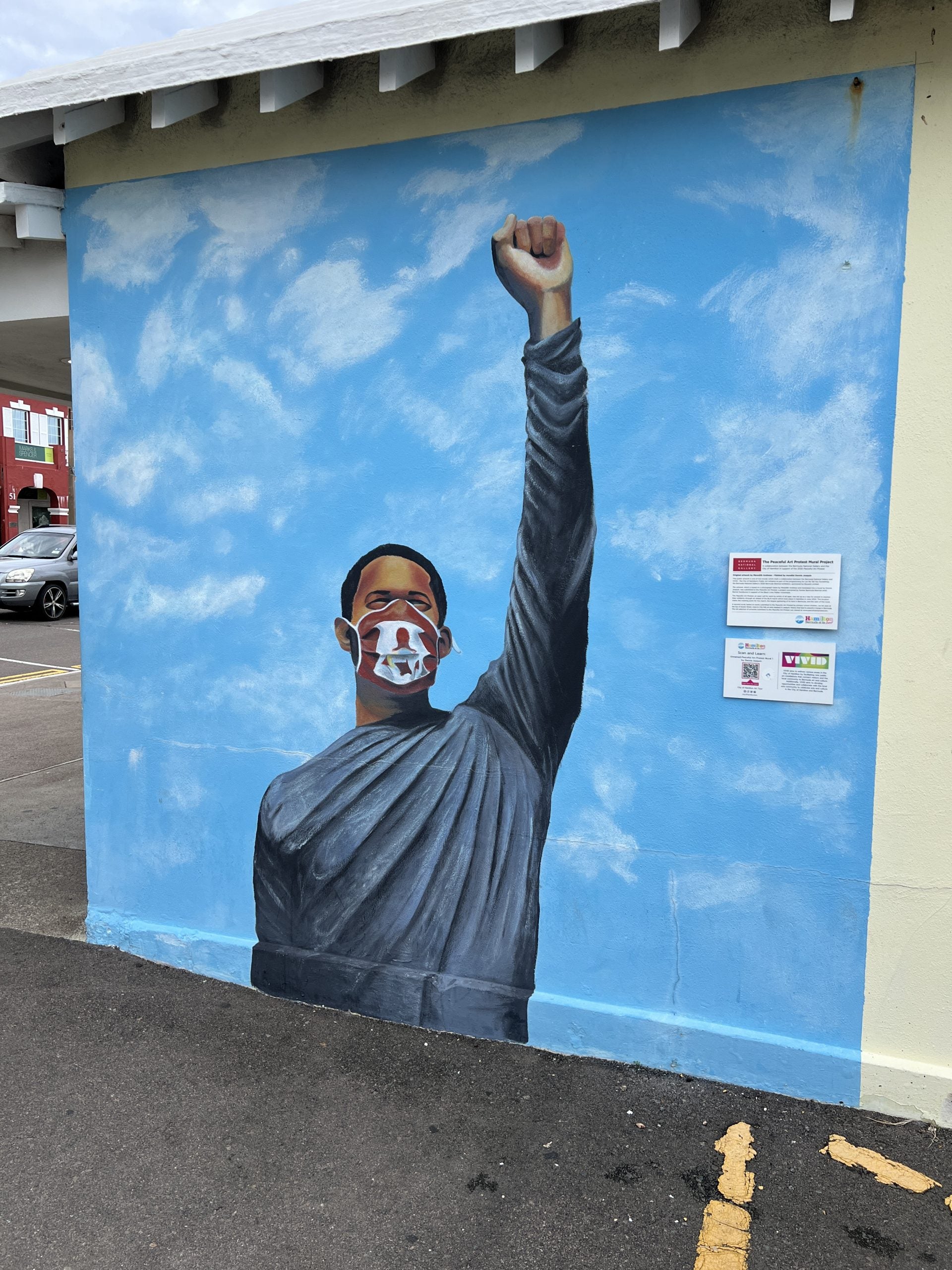
Bermuda’s solidarity with the global Black community is evident in the way the island reflects shared experiences of Blackness, mirroring the struggles and triumphs seen across the African diaspora. The Black Lives Matter movement, which resonated deeply across the world, found a powerful expression in Bermuda through public art that continues to stand as a testament to the island’s unity and resistance. Amid the movement, Bermudians created murals that still serve as vivid reminders of the fight for justice and equality. One particularly impactful piece is a mural inspired by an original photograph taken by Meredith Andrews, which was reimagined by Bermudian artist Dennis Joaquin. The mural features a Black man raising his fist—a universal symbol of strength, resistance, and solidarity.
This powerful image captures the island’s support for the movement and stands as a reflection of the interconnectedness between Blackness in America and the shared experiences of Black communities across the diaspora. It is a visual reminder that the fight for equality and justice knows no borders, and that the struggles of Black people, whether in Bermuda, America, or beyond, are intrinsically linked.





